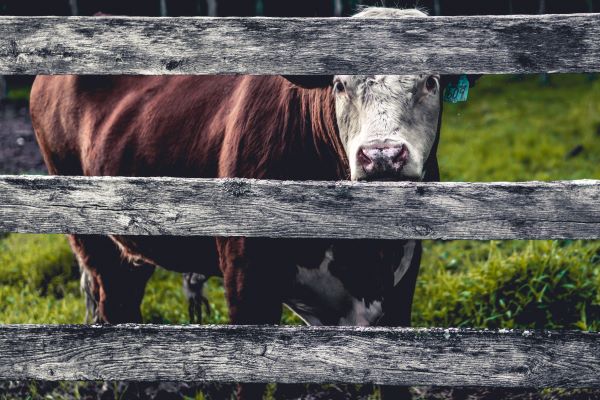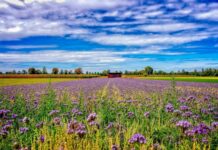Farmers have traditionally tried to separate wildlife and livestock. Wild animals can spread diseases, prey upon or outcompete domesticated animals. The reigning ideology has been to build sturdy fences to keep livestock in and nature out.
However, there is limited land to fence in. As the human population skyrockets, farmland is encroaching on wild animal territories more and more, putting native species and livestock in contact. By encouraging wildlife and livestock coexistence, African farmers can benefit from ecotourism and enhanced biodiversity.
Preventing Disease and Predation
One concern of letting animals mingle is the spread of disease. Foot and mouth disease in particular passes from infected African buffalo to cattle, causing blisters in the mouth and hooves of affected animals.
Farmers can vaccinate their cows, pigs, sheep and goats against the disease every few months to boost their immunity. They also fear the spread of ticks from wildlife to livestock, but acaricides are still effective at killing the pests and tick vaccines are on the horizon for distribution.
In South Africa, caracals and black-backed jackals are the primary predators farmers must deal with. A study found thick collars could prevent predators from biting sheep and goats on the neck. It also found rounding up livestock into protective pens at night was more effective than shooting the predators and keeping livestock guardian animals also deterred carnivores.
Inviting Ecotourism
In Africa, ecotourism is a booming business. Visitors flock to safaris from around the world, hoping to catch a glimpse of charismatic megafauna — large, charming animals like zebras, lions and elephants, which people generally find fascinating.
By letting wildlife intermingle with their livestock, farmers can generate income from ecotourists who want an up-close view of nature. They can keep fewer cattle, sheep and goats, leaving more space for wildlife to forage in their pasture.
Impalas might be such a common sight in Africa farmers don’t give them a second thought. However, most people will never get to see one, making them a once-in-a-lifetime sighting for a foreigner. The income landowners get from ecotourism can offset the cost of having less livestock on their property.
Supporting Biodiversity
As climate change drives habitat loss, it’s more important than ever for farms to provide suitable conditions for wildlife. Drought is one of the biggest stressors facing farmers and their animals today, increasing conflict between wild and domesticated animals.
Adding fuel to the fire, practices like overgrazing, excessive mowing and abundant fertilizer use can make farmland homogenous and reduce habitat variety. This makes it inhospitable to certain wild animals and plants.
Wildlife includes organisms both large and small, from elephants to insects. Biodiversity measures the density of different species of plants, animals, fungi and microorganisms in an area. There are several ways to encourage biodiversity on a farm.
For example, farmers can set aside a portion of their property and not develop it while intensely managing a smaller section of land. This is called land sparing. Even small strips of land left unmanaged between rows of crops can support wildlife and may serve as a buffer to prevent agricultural runoff from reaching streams.
Farmers can sow fields of native grasses to support both livestock and wildlife. A rich mix of grass species yields various nutrients for grazers and the different grasses take different nutrients from the soil. This prevents the phenomenon where a monoculture crop depletes the soil entirely of one mineral or element, making it harder to plant the same crop year after year.
By using strategies to increase biodiversity, landowners can help wildlife and farm animals share the same space.
Encouraging Wildlife and Livestock Coexistence
Climate change and the increasing human population present new challenges to African farming. However, wildlife and livestock can coexist and even provide unique benefits to landowners, such as increased income from ecotourism.

Jane is an agriculture and environmental journalist and the founder and editor-in-chief of Environment.co, where she covers sustainability and eco-friendly living.









[…] These methods range from hunting to poisoning. Other options include various types of deterrents, livestock-guarding animals, and sterilization. Despite their widespread use, these methods are rarely tested for their […]
Comments are closed.